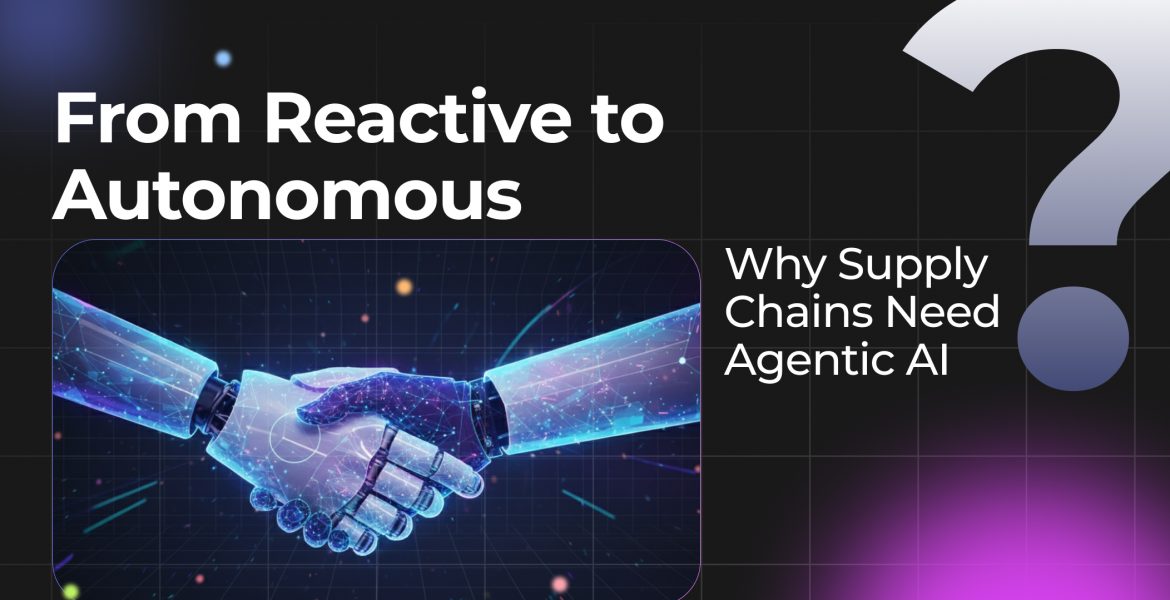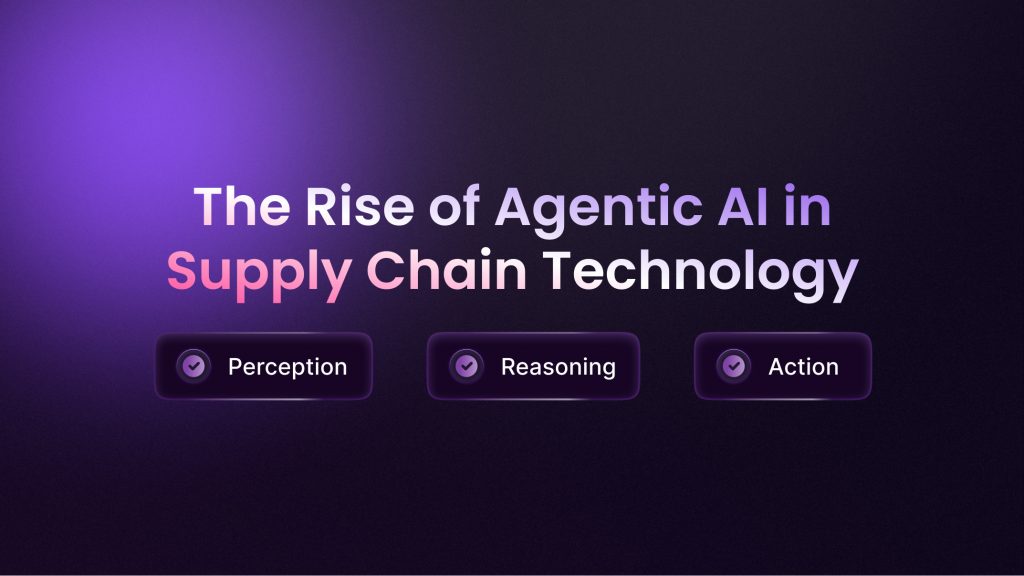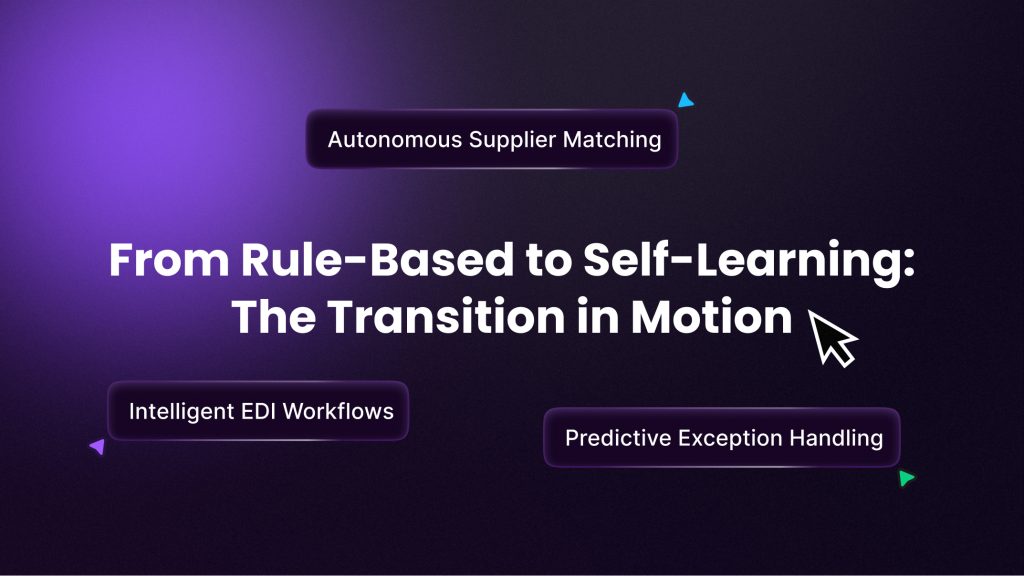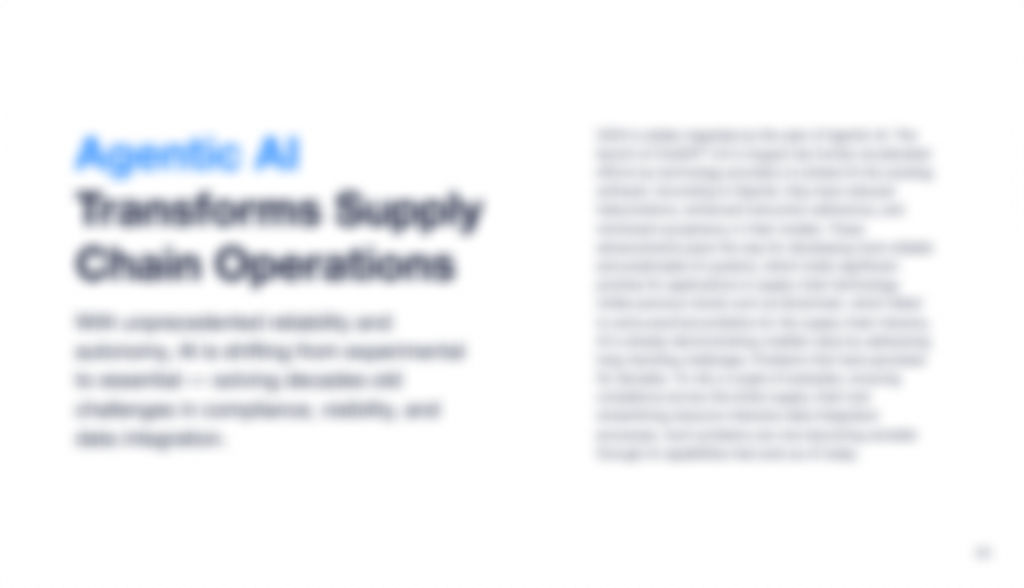
From Reactive to Autonomous- Why Supply Chains Need Agentic AI
On October 15, 2025 by Latheefa NazeerIn today’s volatile global economy, supply chains no longer have the luxury of reacting to disruptions; they must anticipate them. Traditional rule-based systems, once celebrated for automating repetitive workflows, now struggle to keep pace with the speed, and complexity of modern trade.
The next evolution of supply chain intelligence is here: Agentic AI. A new class of self-learning, autonomous systems that transform how data, decisions, and operations flow across enterprises.
The Limitations of Rule-Based Automation
For decades, supply chains have relied on rule-based automation to streamline routine processes such as order confirmations, shipment updates, and invoice matching. These systems followed predefined logic: “If X happens, then do Y.”
While effective in structured environments, they lacked flexibility when handling exceptions, dynamic supplier behaviors, or evolving compliance rules. When disruptions occurred like supplier delays or shipment reroutes, these systems could only escalate alerts for human intervention.
In essence, they were reactive, not intelligent. They executed commands without contextual understanding.As global supply networks expand and data volumes surge, the need for a more adaptive, self-driven, and proactive intelligence layer has become inevitable.
The Rise of Agentic AI in Supply Chain Technology
Agentic AI represents the next frontier of supply chain automation. Unlike traditional AI models that simply predict outcomes, Agentic AI systems act on those predictions autonomously.
These intelligent agents analyze vast, multi-source datasets in real time, identify potential risks or opportunities, and take corrective or optimizing actions without waiting for human prompts.

At its core, Agentic AI combines three critical capabilities:
- Perception – Continuously interpreting real-time data from EDI transactions, ERPs, APIs, and partner networks.
- Reasoning – Understanding business logic, constraints, and goals to make contextually relevant decisions.
- Action – Executing workflows autonomously across systems – rerouting orders, alerting partners, or optimizing inventory allocation.
According to Gartner, by 2027, more than 60% of supply chain decisions will be made autonomously — marking a definitive shift toward self-learning ecosystems.
From Rule-Based to Self-Learning: The Transition in Motion

This transition from rule-based automation to agentic intelligence is already reshaping critical supply chain functions:
1. Intelligent EDI Workflows
Traditional EDI systems automate document exchange but depend heavily on manual rule updates.
With Agentic AI, EDI workflows become adaptive. For instance, when a partner’s EDI format changes, an intelligent agent can recognize the pattern, adjust the mapping, and validate the transaction automatically, eliminating downtime and human dependency.
Zenbridge’s Agentic EDI- as- API approach enables such dynamic learning, allowing systems to evolve in real time as trading ecosystems change.
2. Autonomous Supplier Matching
Supplier selection once relied on static catalogs and historical data. Agentic AI transforms this process by continuously evaluating supplier performance, lead times, pricing trends, and compliance history.
When a preferred supplier fails to meet capacity, the AI agent proactively recommends and even initiates engagement with alternative, high-performing suppliers that align with organizational KPIs.
This marks a powerful shift from data-driven insights to decision-driven actions.
3. Predictive Exception Handling
Traditional systems flag exceptions after they occur. Agentic AI predicts and prevents them.
For example, it can detect early signals of a shipment delay based on past carrier performance or regional disruptions, then autonomously trigger corrective actions such as rerouting goods, updating ETAs, or alerting customers.
This proactive exception handling minimizes operational friction, enhances customer satisfaction, and ensures continuity even amid uncertainty.
The Business Case for Autonomy
The payoff of autonomy isn’t just efficiency — it’s resilience.
Organizations adopting Agentic AI are not merely automating processes, they are architecting adaptive, self-correcting supply chains.
By enabling systems to learn, adapt, and act independently, enterprises achieve:
- Faster decision cycles through continuous learning.
- Reduced manual intervention and operational costs.
- End-to-End visibility powered by real-time intelligence.
- Enhanced partner collaboration through intelligent EDI-driven interactions.
- Ultimately, Agentic AI transforms supply chains from being reactive ecosystems into autonomous value networks, where decisions are made at the speed of data.
Conclusion: The Autonomous Era is Here
The shift from reactive automation to autonomous intelligence is not a distant vision – it’s unfolding now.
As the backbone of digital trade, supply chains must evolve beyond static rule sets and embrace Agentic AI as the enabler of continuous learning, decision-making, and execution.
At Zenbridge, we are pioneering this evolution by embedding Agentic AI within our EDI- as- API platform, enabling supply chains to become truly self-learning, adaptive, and future-ready.
Because in tomorrow’s supply chain, autonomy isn’t optional – it’s inevitable.
Dive deeper into Agentic AI’s impact on supply chains.
Download our Whitepaper

Promise to Practice: Agentic AI in Supply Chain 2025–2026.

Leave a Reply